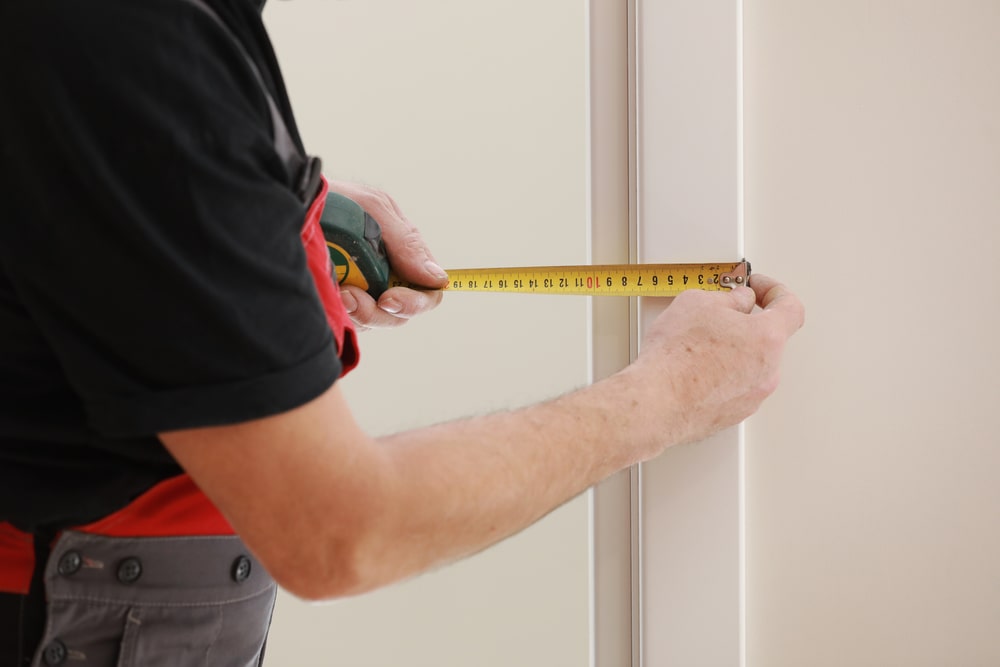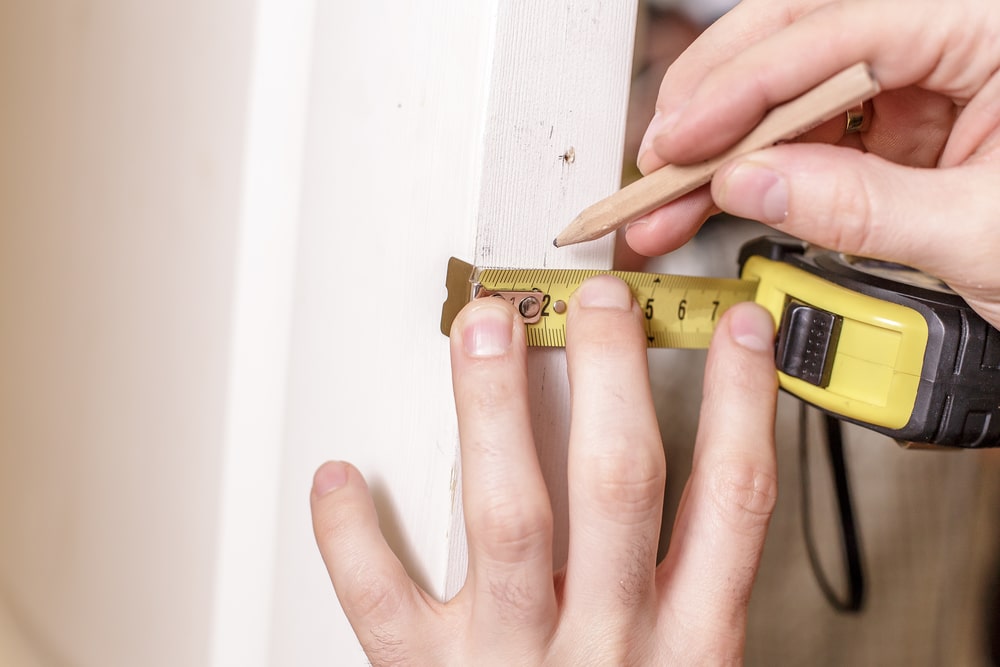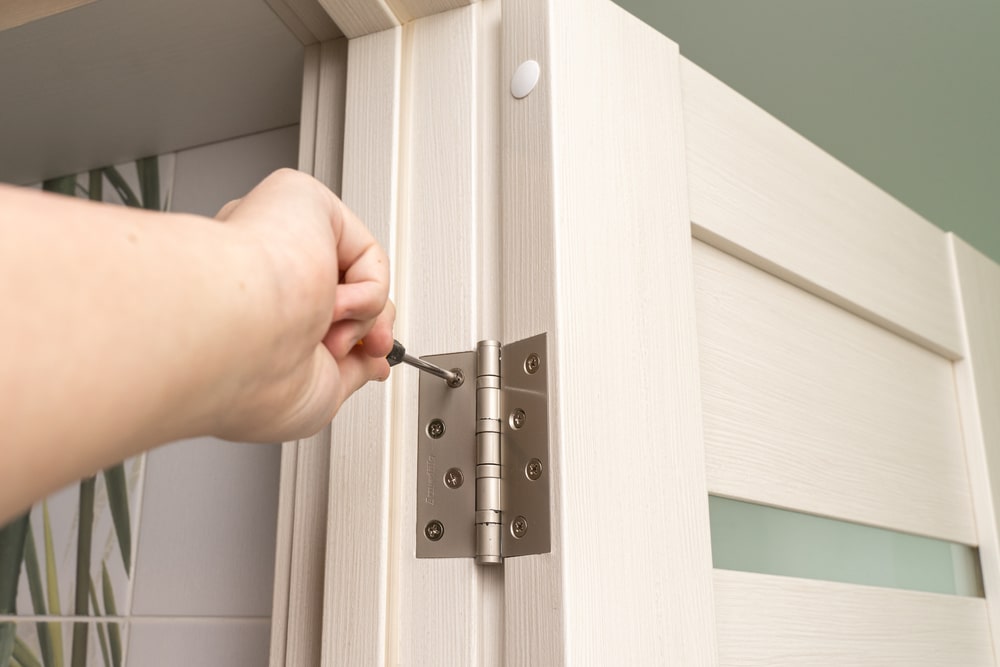
If you're planning to buy replacement doors, there's a lot to consider. Whilst you may be focused on choosing between oak doors, wooden doors, finished and unfinished doors, there's one aspect you must get right: the size. It's vital to get the right measurements for your new doors. In fact, how to measure for new internal doors is one of our most commonly asked questions.
While we’re delighted to bring you a huge range of internal doors to suit all needs and tastes, we also want to ensure that your new internal doors fit perfectly in your house. We don’t want you to have to plane off an excess of good quality timber. Nor do we want you to be frustrated by a door that doesn’t fit the dimensions of your frame. As well as helping you to better understand the different internal door sizes, we also aim to help you to measure your door correctly, so you can hang your new internal door with complete peace of mind.
Precision is extremely important when measuring an internal door. Underestimate your measurements, and you may have difficulty opening and closing your door. Especially after it’s been finished. On the other hand, overestimating may lead to a fit that’s not quite snug enough and admits draughts and noise.
When measuring for an interior door, you’ll need a tape measure, a pencil and a piece of paper. Here's how to measure:

To measure door height, it’s best to measure the inside of the vertical sides of the frame. Be sure to measure both as not all door frames are completely symmetrical. Start with the left hand side, and measure from the top corner to the bottom corner. Repeat in the middle, and at the right hand side.
The longest length will give you the required height measurement. When measuring your door’s height, it’s important to factor in your floor covering. If you fail to account for their impact on your door’s height, you may find that you struggle to shut the door once it’s hung.

Remember, doors aren’t always the same width all the way through, and estimating based on just one measurement can leave you with a lot of planing to do. To measure door width be sure to take three measurements from inside the door frame.
Start at the top corner and measure across. Repeat this across the middle and again at the bottom. Use the widest measurement to ascertain the width of your new door.

To measure the thickness of an existing door, you'll just need one measurement. We'd recommend measuring at about handle height.
When it comes to internal doors, thickness is usually standardised. The standard thickness is 35mm, and this will be the thickness for the vast majority of doors. This is why you don't need to be quite so exact when measuring the thickness.
However, there are some rooms like the kitchen or garage that are likely to have fire doors fitted. Fire doors are usually either 40mm or 44mm in thickness.
To get a clear idea of the thickness that your frame will allow, measure the frame rebate where the door will sit once it has been closed.
Take a look at this useful video from one of our trusted brands, Jeld-Wen:
Although there isn’t a standard size for all internal doors, most internal doors fall within a range of standard sizes. 1981 x 762 x 35mm is perhaps the most common door size, but internal doors are usually anywhere from 1981 x 457 x 35mm to 2040 x 926 x 40mm, or between 1981 x 610 x 44mm and 2040 x 926 x 44mm for internal fire doors. You can find out more about standard door sizes in our internal door size guide.
There’s a lot of confusion over whether it’s best to measure for a new door based on your existing door or the frame.
We recommend that you not base your measurements on your existing door, instead of measuring based on your door frame. This will ensure that you get a fit that is perfectly flush with your frame, which your current door may not necessarily provide.
We find that door sizes sometimes cause confusion for customers. Hanging a new door is, fortunately, not something that even hardened DIYers have to deal with often. When shopping for a new door, you may hear doors spoken about in industry terms… which is usually just a volley of numbers.
For instance, you may hear carpenters talk about a 30 68 door. This is a door that is 30 inches (2 feet 6 inches) wide by 6 feet and 8 inches tall (or 80 inches). In the UK, despite the parlance of many carpenters, doors are usually measured in millimetres rather than feet and inches.
As such, when you visit a retailer like ourselves either online or on-site, they’re likely to present door sizes in the following format: Height (mm) x Width (mm) x Depth (mm) e.g. 1981 x 762 x 35.
Take a look at our internal door sizing guide if you need a helping hand converting metric to imperial measurements and vice versa.
When shopping for doors or looking for fitting instructions, you may come across the term ‘rough opening’. This is an approximate size for your doorway, including both your door and your frame and is usually calculated by adding between two and two and a half inches (50-64mm) to the size of a door.

When hanging a new door in an existing frame, you’ll need to ensure that the fit between the door and the frame is just right. Fortunately, most doors have generous lipping so that you can plane yours down to size to ensure a perfect fit and easy closing.
Ideally, there should be a gap of around 3mm (or ⅛ of an inch) around the top and sides and around 9mm (⅜ of an inch) at the bottom. This will ensure easy opening and closing without compromising thermal or sound insulation.
At Express Doors Direct, we have a huge selection of doors to suit most frame sizes. Our experienced and knowledgeable team are also on hand to provide expert advice and help ensure that you get a perfect fit. But if your door frames have an atypical size that you don’t see listed on our website, don’t panic. We also offer a range of bespoke made to measure doors that provide a perfect fit for doorways with unusual dimensions.
We've created a detailed internal door size guide too, so you can find out more or use the door size conversion chart. Let us help you find the perfect door for your frame.
If you're shopping for external doors, don't forget to check our dedicated guide to external door measuring.
Proud stockists of....
